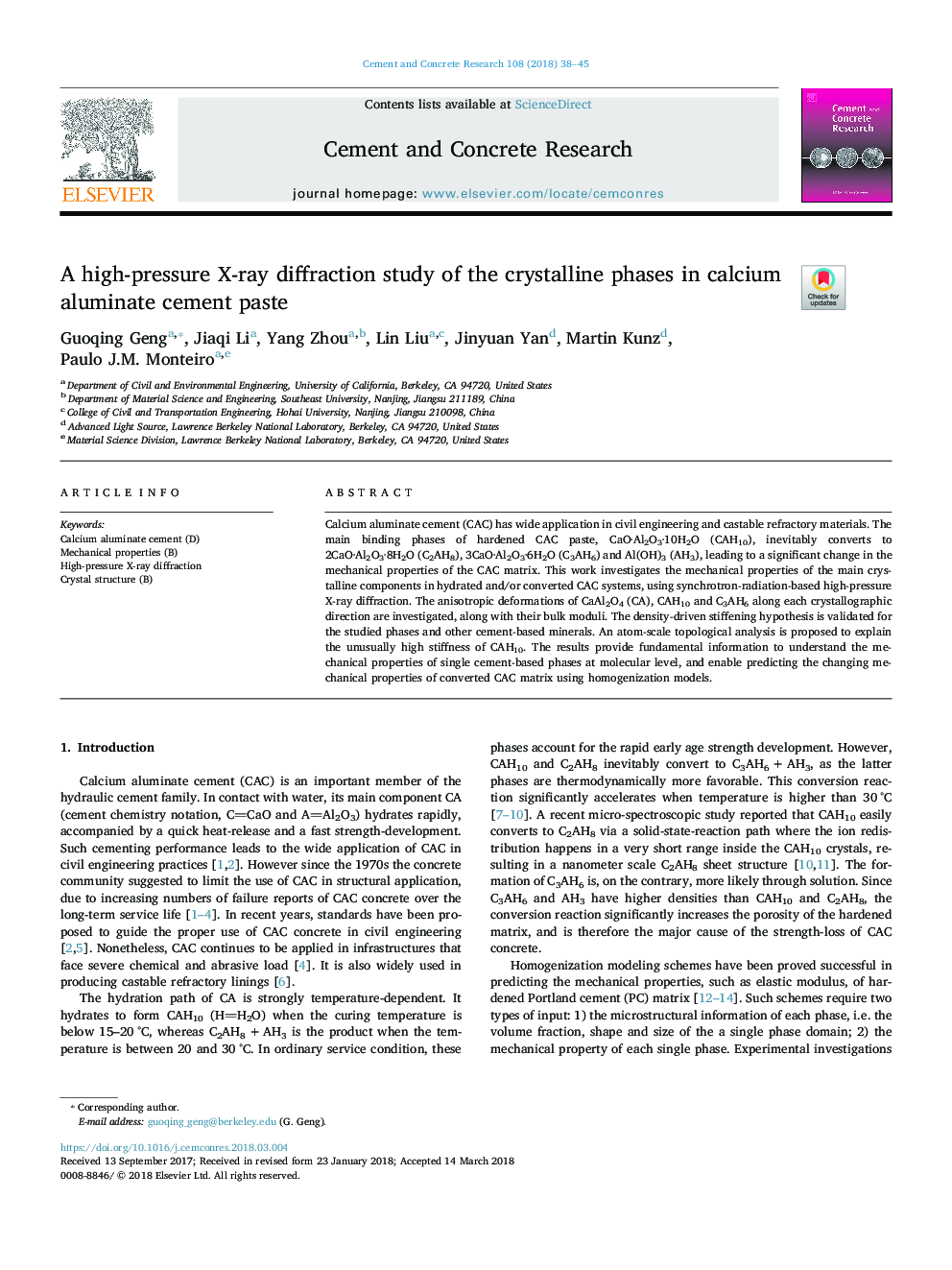| Article ID | Journal | Published Year | Pages | File Type |
|---|---|---|---|---|
| 7884666 | Cement and Concrete Research | 2018 | 8 Pages |
Abstract
Calcium aluminate cement (CAC) has wide application in civil engineering and castable refractory materials. The main binding phases of hardened CAC paste, CaO·Al2O3·10H2O (CAH10), inevitably converts to 2CaO·Al2O3·8H2O (C2AH8), 3CaO·Al2O3·6H2O (C3AH6) and Al(OH)3 (AH3), leading to a significant change in the mechanical properties of the CAC matrix. This work investigates the mechanical properties of the main crystalline components in hydrated and/or converted CAC systems, using synchrotron-radiation-based high-pressure X-ray diffraction. The anisotropic deformations of CaAl2O4 (CA), CAH10 and C3AH6 along each crystallographic direction are investigated, along with their bulk moduli. The density-driven stiffening hypothesis is validated for the studied phases and other cement-based minerals. An atom-scale topological analysis is proposed to explain the unusually high stiffness of CAH10. The results provide fundamental information to understand the mechanical properties of single cement-based phases at molecular level, and enable predicting the changing mechanical properties of converted CAC matrix using homogenization models.
Keywords
Related Topics
Physical Sciences and Engineering
Engineering
Industrial and Manufacturing Engineering
Authors
Guoqing Geng, Jiaqi Li, Yang Zhou, Lin Liu, Jinyuan Yan, Martin Kunz, Paulo J.M. Monteiro,
